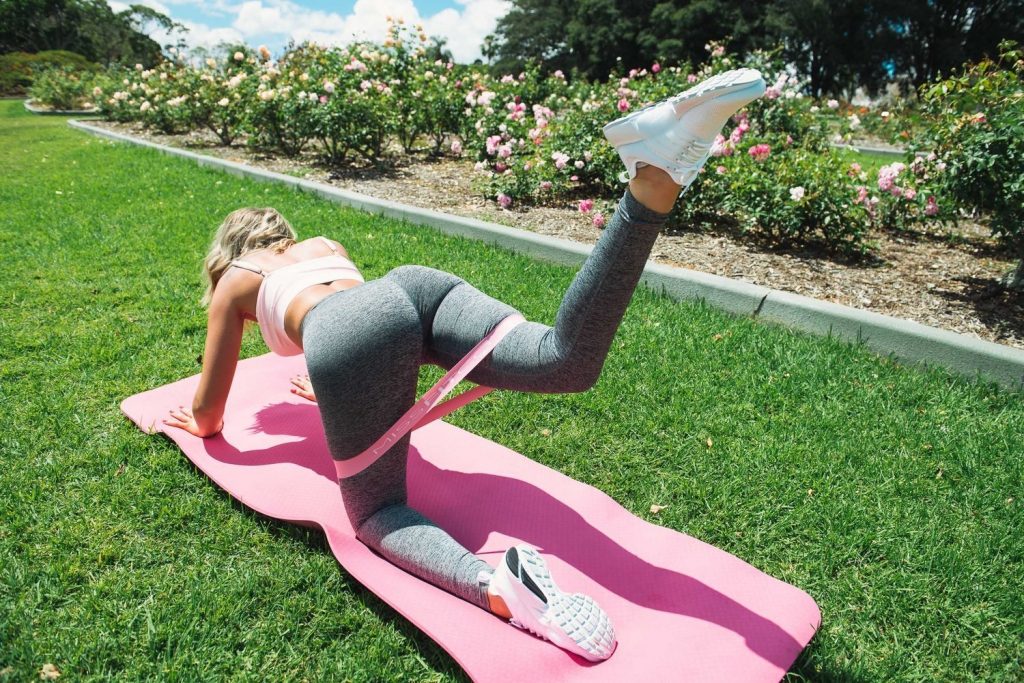
Can You Build Muscle with Booty Bands?
Booty bands may seem like the latest fitness fad to sweep the nation, but far from their flimsy appearance, these resistance bands are easily one of the most effective and versatile tools that you can add to your workouts, whether at home or in the gym.
Often used to develop speed, mobility, or in a rehabilitation setting, bands like booty bands can also be used to develop overall strength and muscle mass.
Read on to discover more.
Can I Build Muscle with Bands?
If you’ve so much as glanced at a fitness influencer’s social media profile or taken part in an at-home workout, there’s a good chance you’ve come across booty bands. These looped elasticated bands belong to a diverse family of resistance bands, which come in different strengths and lengths.
While they’re often used in this setting as a way to “feel the burn,” these bands can actually be effective tools for muscle development.
Bands are for Beginners…
Fitness beginners, for example, will be able to see considerable strength and muscle tone gains after regularly working out with bands. They’re one of the safest ways to begin focused strength and conditioning work, allowing for a full range of motion through a joint without putting it under the intense pressure that free weights do.
And, because the dynamic force of resistance bands creates tension throughout the entire concentric and eccentric phases of an exercise, they’re a practical way to execute movement patterns under load with good form. After all, the long-term efficacy of any exercise lies in doing it correctly.
…And Pros
It’s not just beginners who can receive benefits from training with booty and resistance bands, however.
Athletes and experienced lifters often have a very narrow view of resistance bands, seeing them as merely a rehab tool rather than a practical addition to their daily workouts. In truth, Resistance bands can actually provide a better functional workout for athletes than free weights, offering more choice when it comes to resistance during a movement, as well as versatility.
They’re particularly useful when used in programs that are focused on developing speed, responsiveness, power, and overall muscular strength and endurance. Meanwhile, integrating them into sports-specific movement patterns allows athletes to perform under load while maintaining a dynamic quality.
How to Build Muscle with Bands
The more conventional way to increase muscle mass involves lifting heavy weights during compound movements. Lots of people who already use resistance bands in their training will reach for the kettlebell or a barbell with plates to perform squats, for example, and keep their bands for mat exercises or as a stretching tool.
Interestingly, however, a 2016 meta-analysis of muscle activation comparisons between resistance bands and free weights concluded that training with bands can generate “relatively equal muscle adaptations” since there’s a link between time under tension and muscle strength.
So, what does this mean for building muscle?
Well, while resistance band training won’t give the extreme hypertrophied look that free weights can accomplish, bands will nevertheless increase muscle strength and mass. The key lies in the type of exercises you perform and how you perform them.
The most effective Resistance Band Protocol
As with free weights, the most effective way to increase muscle strength and mass with booty or any type of resistance band is to use a low-rep/high-load protocol.
For beginners, this means emphasizing form with lighter bands, while for advanced lifters and athletes, denser, heavyweight bands should be used to increase intensity.
Being elastic, bands provide more resistance the further apart they’re stretched, so performing a slow and steady workout will achieve more in terms of gains than faster movements.
As for the best exercises to perform in such a protocol, look no further than the Big 6 of bench press, deadlift, pull-up, row, shoulder press, and squat, these compound movements target multiple muscle groups at once, increasing muscle mass and offering a higher caloric expenditure in the process.
Depending on the density of the band used, beginners can focus on performing 3 sets of 6-8 reps of a lift before moving on to the next one. This could look something like:
- 3 x 7 squats
- 3 x 7 row
- 3 x 7 deadlift
- 3 x 7 shoulder press
More advanced people, meanwhile, should aim to perform 3 sets of 3-5 reps of each lift using the heaviest band they can. As with beginners, complete 3 sets per exercise before moving on to the next one.
Worth Adding to Your Toolkit
No matter your current level or lifting experience, if you want better performance at the gym or in elite-level sports, you need to add booty and resistance bands to your toolkit. Combing resistance band training with regular weight training and cardiovascular exercise will transform you into a functional, dynamic, and well-rounded athlete.


























